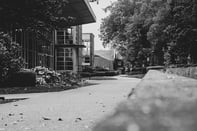Published on
From Pre-K to Postsecondary: Creating a Lifelong Education Continuum

Higher education doesn’t exist within a silo. Not only is it the jumping-off point for meeting the career needs of the modern world, it’s also the culmination of a K-12 educational system that prepares learners for lifelong learning, both within and beyond the classroom. With a mandate to provide information, policy, analysis and resource development for early childhood, K-12 and postsecondary education, the National Governors Association’s Division of Education understands the unique position of higher education better than most. In this interview, Aaliyah Samuel argues that education, from pre-K to postsecondary, must exist within a continuum that emphasizes lifelong learning, and discusses why creating access to learning opportunities from the earliest ages best prepares young learners for an evolving future.
The EvoLLLution (Evo): How well designed is the current education system when it comes to ensuring readiness for the labor market?
Aaliyah Samuel (AS): We are seeing a growing trend in the educational system towards increasing access to high-quality programming. With this, we can position children to be not only well prepared citizens, but also well situated within the workforce and lifelong learner model. We are taking an increasingly holistic look at how the workforce market is changing, and how the future of work is affecting higher education.
With that said, there are some gaps. We know that there’s not enough funding to be able to support access for the vast number of kids that need and deserve these types of high-quality programs. We also know that innovation is happening in certain pockets, but it’s not universal. We need to start thinking not just about access and quality, but also about how we can move towards a model where children who are underserved in the current system can be better exposed to the resources, support and instructional practices they need to meet their maximum learning and life potential.
Evo: How does the educational environment need to change in order to create a continuum model where there is that progression and access to high-quality learning opportunities from pre-K to postsecondary?
AS: Funding is definitely a priority because we know it isn’t equitable—not on a regional basis, and not between states or even certain subgroups of students. We need to think about funding differently to address these equity issues.
We also need to think about how students and families are receiving information. How do they know these programs are even out there? Oftentimes, there’s not just an access and opportunity gap, but also an informational gap, simply in terms of making sure that students and families have the information they need to make sound educational decisions.
We need to consider linkages across the system as well. Right now, the system is incredibly fragmented. As a former principal and teacher, I know that there’s not a strong connection in transitioning a student from the early learning years into kindergarten. Even the transitions between elementary and middle school, and from middle school to high school, are fragmented. What are a student’s options in high school? They could be considering career and technical education programs, international baccalaureate programs, or apprenticeship programs. What is the full array of alternatives and options for families to consider? Oftentimes, they don’t know.
Also, in-school support is important. A recent study found that an average high-schooler within their four years of high school gets an average of 10 minutes of counseling services across a calendar year. If we really want to coach and mentor the next generation about their options, they need more than an average of 38 minutes within a four-year period.
Finally, we need to look at enrichment opportunities for our students in the early learning space. Depending on your zip code or family income, you may have access to coding or STEM or dual-language programs—or you may not. If your school doesn’t have those types of supports in place, students might not be able to access them through extracurricular programs either. So, we need to consider not just in-school time, but out-of-school time as well.
Evo: How important are things like summer camps and targeted outreach programs offered by continuing ed divisions within universities in making college an attainable reality for pre-K to 12 learners?
AS: University programs are extraordinarily important, especially when we look at the percentage of academic gains that can be lost during the summer months. These programs are a huge resource and could benefit literally hundreds of thousands of elementary and secondary students—particularly those who are first-generation Americans and/or students whose parents weren’t college educated. Oftentimes, exposure to these different kinds of programs is their only opportunity to have a different perspective on what their life choices could be.
This is where postsecondary institutions can come into play: by offering not only summer enrichment programs, but also by showcasing all of the options that are out there. Often, students don’t know what they can become because they don’t know how wide the world can be. Introducing students to different types of professional careers, and giving them an opportunity to understand what steps they need to take in order to get into these fields, is incredibly important. Oftentimes, these students think, “I don’t have the in-home support to pursue the field I want, so it is not an obtainable goal for me.” We can help them understand those other support systems.
High-quality summer camps shouldn’t just be for children whose parents can afford to send them. They should be an opportunity for all children.
Evo: What can colleges and universities do to help to move our educational ecosystem towards this vision of a continuum of lifelong learning?
AS: First, I would recommend looking at the type of teacher or principal preparation programs they have. How are we helping to remove the silos from these teachers moving through the education system? The school is the hub for so many educators. How are we thinking cross-collaboratively so that we can start to think beyond exclusively post-secondary or secondary or elementary education?
Second, we need to think about diversity, by which I mean diversity in terms of those who are in front of students. Whether it’s postsecondary students, early childhood students or K-12 students, we know that children perform better when they’ve had a teacher at some point that they can relate to on a cultural, spiritual or emotional level. So, how are we fostering those strong relationships across a very diverse group?
Third, we should look at some of the barriers that prevent people from going into postsecondary education. Often, those barriers are cost-related: We need to maximize opportunities to increase college affordability and we need students to understand what the cost of postsecondary education means in terms of working towards a long-term goal. Part of this is showing students that there are benefits that outweigh the financial cost of postsecondary study.
We also need to create more innovative models to hold schools accountable for students who may not be able to achieve their expected level of success. How are we being creative about building those in-school supports? Arizona State University comes to mind: they have been innovative in connecting with their regional high schools and building supports for first-generation college attendees. We need to think about how we can do more to keep students in school, rather than weeding them out.
Evo: Is there anything you’d like to add about creating a lifelong education ecosystem, and the role that colleges and universities and continuing education divisions need to play to turn this vision into a reality?
AS: The education system needs to realize that our world is changing. Technology is changing how we operate and the world is only going to get bigger. We can’t continue to have the same single- or dual-track programs that we’ve had for the last 15, 20, 30 years. How are we rethinking our programs so that we are raising the next generation to be broad, analytical, creative problem-solvers? We need to move away from what we have historically known as the teaching methodology to encompass this new world. The education system must comprehensively catch up with these broader societal changes.
And I say that with full respect. I was a teacher, assistant principal and principal. My son is in a public school and I am an advocate for public school, but I see the changes and have to ask: How do we remain flexible? From our preparedness programs to actual instructional practices, to opportunities for enrichment and engagement, we must make sure that we’re creating that continuum.
Finally, we can’t be afraid of data. We need to look not only at the types of data that we’re collecting, but how we’re disaggregating that data to tell an effective story. That data will be a catalyst for change.
This interview has been edited for length and clarity.



